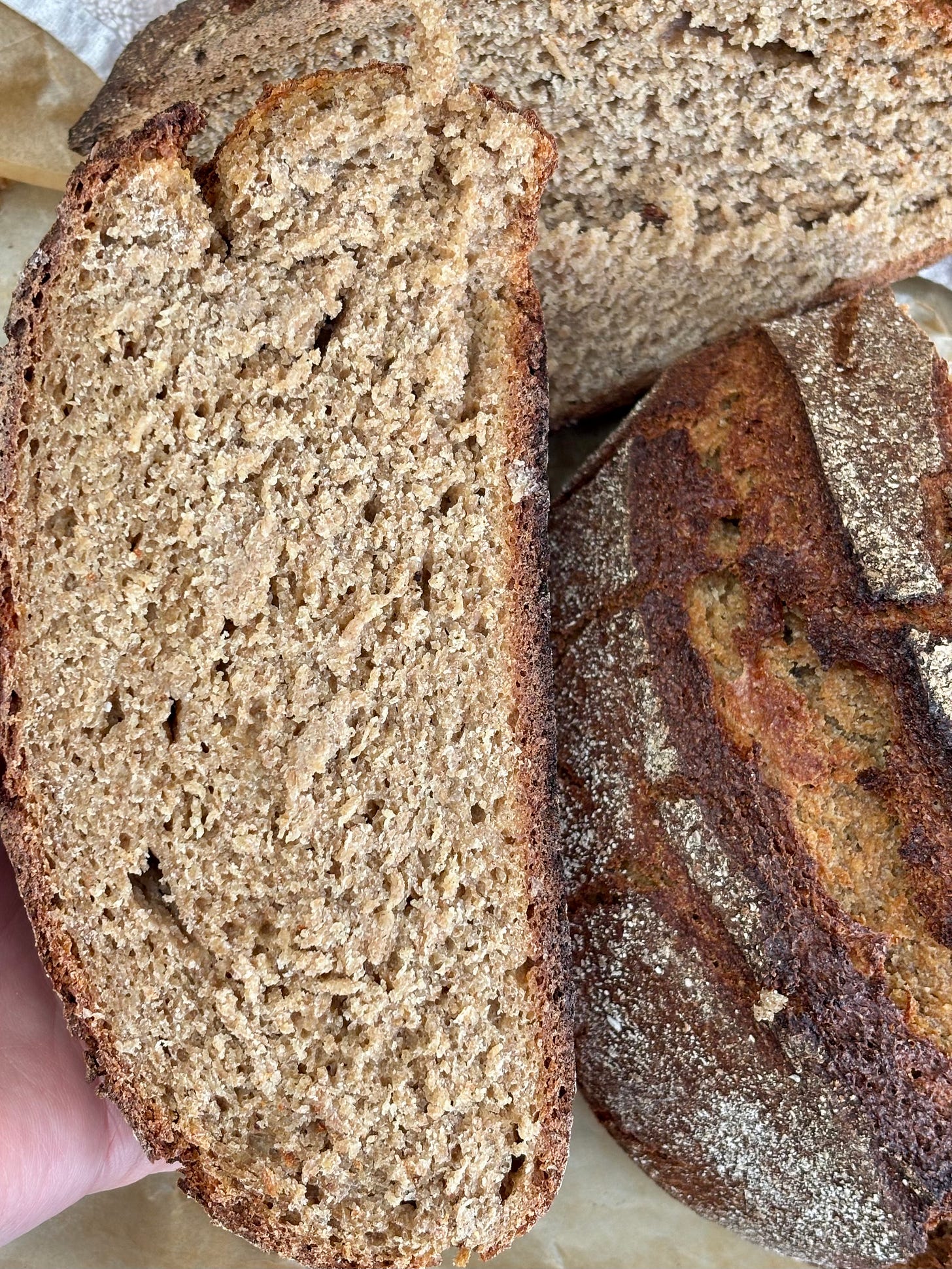The Loaf That Took My Breath Away (Literally)
Histamine in Sourdough? A Case Study on Wholegrain Fermentation, Food Sensitivity, and My Unexpected Reaction
I’ve been inching my way back into the world of gluten and took a first step today. In hindsight, perhaps it wasn’t the most careful or cautious step considering my history with food sensitivities and histamine intolerance. But I was feeling bold (and delusional) today!
After years of avoiding wheat completely, I decided to try The Perfect Loaf’s wholegrain sourdough recipe. I used freshly milled einkorn and Sonora wheat instead of traditional hard white wheat. The process from start to finish took about 15 hours, including fermenting in the proofing oven. No chilled fermenting, no overnight cold proof—which is where I think it went wrong.
It turned out okay. It wasn’t the best crumb-wise, but for what it was—a low-gluten sourdough, it was pretty good.
I spent the morning debating: should I try the bread? Should I wait until I bake something without the sourdough?
I decided to dive in and shortly after eating, I felt anything but “okay”.
The Reaction
Within 5-10 minutes, I had that familiar, creeping histamine reaction: chest tightness, air hunger, and tingling and numbness on the back of my tongue. My amine reactions can vary depending on the trigger, but this reaction is pretty common for me when eating something that kicks off a histamine spiral. It wasn’t a gut reaction, but more of a systemic one. As of this writing, I haven’t had any gut issues (no stomach pain, etc.).
What I Think Went Wrong
I don’t think the issue was the wheat. I’m not allergic to wheat, don’t have celiac, and the grains I selected (einkorn and Sonora) are both really low in gluten. I’m also not having the same symptoms I used to attribute to a gluten reaction when I was eating wheat. The reaction today was similar to my allergic reactions when eating other non-wheat foods.
What I think caused the reaction was the extended warm fermentation—a perfect environment for histamine and other biogenic amines to flourish in. Long ferments, particularly at room temperature or warmer, are a disaster for those of us with histamine intolerance or mast cell issues. As the dough ferments, amines like histamine are released as lactic acid bacteria byproducts. For people with histamine intolerance or MCAS (with an almost overflowing bucket), those byproducts can spill over and overload the system—leading to allergic-type of reactions.
Cold fermentation (like an overnight proof in the fridge) can slow the fermentation process down and reduce the amine load. But I skipped this step and opted for a more expedient and warmer fermentation.
What I’m Trying Next
Next, I’ll be testing a simple yeast-based einkorn bread. The goal is to keep the process clean and controlled so I can isolate the wheat itself and see how I do with it.
By removing sourdough from the equation, I can separate the grain from the fermentation. I chose einkorn because it’s a gentler, ancient grain that tends to be easier to digest (e.g., it’s low in gluten and reactive compounds).
If I can tolerate this bread, it’ll point to the fermentation process—not the wheat—as the likely culprit behind my sourdough reaction. And that gives me a clear next step for future testing. One variable at a time!
Why I’m Sharing This
Well, for starters, I promised full transparency on this journey. But really: healing from food sensitivities and reintroducing food you’ve avoided for years is not a straight line. It’s trial and error, test and adjust. It’s an N=1 experiment for all my statistics nerds.
While everyone loves a success story, I think it’s just as important to share what doesn’t work—because that’s part of the story too.
I’ll keep documenting everything and stay tuned for my post on a 100% einkorn yeast-only bread.





